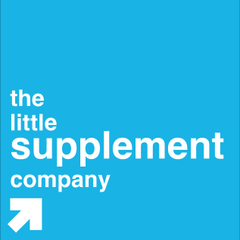NVRENUF Mega-Shreds, the ultimate fat burner.
Posted by Jordan Acheson on
NVRENUF’s Mega-shred has been one of The Little Supplement Company’s best selling products over the last year, and for good reason. Its well-engineered formula is jam packed with proven natural fat burning ingredients. A countless number of individuals have reaped Mega-shred benefits, with some loosing up to a few stone in just a matter of 8 weeks!
Here is a little breakdown of a few of the many ingredients which are in NVRENUF'S Megashred.
Garcinia Cambogia is a fruit native to India and Southeast Asia. Its high amount of Hydrocycitric Acid (HCA) have been shown to significantly increase fat loss in humans by supressing appetite, inhibiting adenosine triphosphate-citrate-lyase and reducing carbohydrate metabolism (Onakpoya et al., 2011).
Coleus forskohlii is a traditional Ayurvdic herb which has been used for many centuries. Its main bioactive ingredient forskohlii, increases cellular levels of cyclic adenosine monophosphate (cAMP) (Sapio et al., 2016). Increased levels of cAMP are associated with accelerated fat loss and acts in synergy with other fat burning compounds to increase their effectiveness.
Caffeine, the most globally consumed stimulant, is a highly effective metabolic booster which has been shown within a meta-analysis to promote fat loss (Tabrizi et al., 2019). By stimulating the sympathetic nervous system, caffeine improves energy expenditure and lipid oxidation during exercise (Acheson et al., 2004).
Schisandra chinensis is a plant with longstanding use in traditional Chinese medicine. Recent years have seen its rise in popularity due to its fat burning potential in absence of side effects (Nowak et al., 2019). Schisandra chinensis also appears to reduce anxiety symptoms and cortisol, promoting a better internal environment for fat loss (Panossian et al., 1999).
Paradoxine (Grains of Paradise/aframomum melegueta) is a herb in the same family as ginger which shares many similar bioactives. The herb has been shown to increase whole body energy expenditure and activate stubborn brown fat (Sugita et al., 2013). Paradoxine, a trademarked form of grains of paradise, contains a powerful antioxidant 6-paradol which helps reduce adipose tissue accumulation.
References
Acheson, K.J., Gremaud, G., Meirim, I., Montigon, F., Krebs, Y., Fay, L.B., Gay, L.-J., Schneiter, P., Schindler, C. and Tappy, L. (2004) ‘Metabolic Effects of Caffeine in humans: Lipid Oxidation or Futile cycling?’ The American Journal of Clinical Nutrition, 79(1), pp.40–6.
Nowak, A., Zakłos-Szyda, M., Błasiak, J., Nowak, A., Zhang, Z. and Zhang, B. (2019) ‘Potential of Schisandra Chinensis (Turcz.) Baill. in Human Health and Nutrition: a Review of Current Knowledge and Therapeutic Perspectives’. Nutrients, 11(2), p.333.
Onakpoya, I., Hung, S.K., Perry, R., Wider, B. and Ernst, E. (2011) ‘The Use of Garcinia Extract (Hydroxycitric Acid) as a Weight Loss Supplement: a Systematic Review and Meta-Analysis of Randomised Clinical Trials’. Journal of Obesity, 2011, pp.1–9.
Panossian, A.G., Oganessian, A.S., Ambartsumian, M., Gabrielian, E.S., Wagner, H. and Wikman, G. (1999). Effects of Heavy Physical Exercise and Adaptogens on Nitric Oxide Content in Human Saliva. Phytomedicine, 6(1), pp.17–26.
Sapio, L., Gallo, M., Illiano, M., Chiosi, E., Naviglio, D., Spina, A. and Naviglio, S. (2016) ‘The Natural cAMP Elevating Compound Forskolin in Cancer Therapy: Is It Time?’ Journal of Cellular Physiology, 232(5), pp.922–927.
Sugita, J., Yoneshiro, T., Hatano, T., Aita, S., Ikemoto, T., Uchiwa, H., Iwanaga, T., Kameya, T., Kawai, Y. and Saito, M. (2013) ‘Grains of Paradise (Aframomum melegueta) Extract Activates Brown Adipose Tissue and Increases whole-body Energy Expenditure in Men’. British Journal of Nutrition, 110(4), pp.733–738.
Tabrizi, R., Saneei, P., Lankarani, K.B., Akbari, M., Kolahdooz, F., Esmaillzadeh, A., Nadi-Ravandi, S., Mazoochi, M. and Asemi, Z. (2019) ‘The Effects of Caffeine Intake on Weight loss: a Systematic Review and dos-response meta-analysis of Randomized Controlled Trials’. Critical Reviews in Food Science and Nutrition, 59(16), pp.2688–2696.
Share this post
- 0 comment
- Tags: diet, fat burner, getting lean, weight loss
